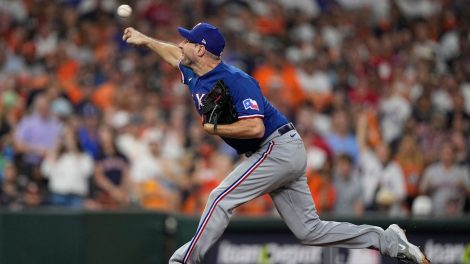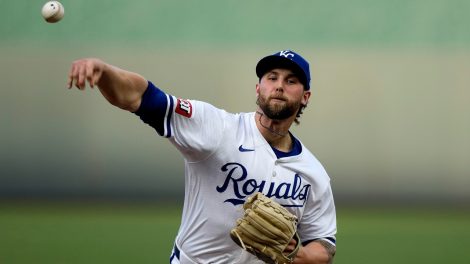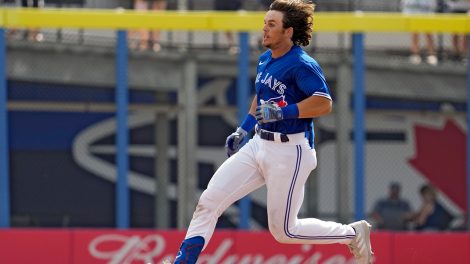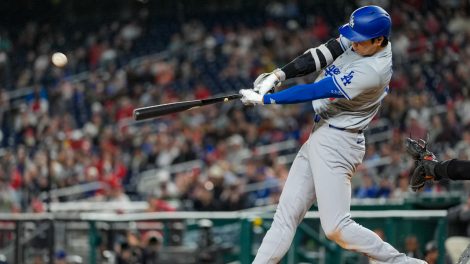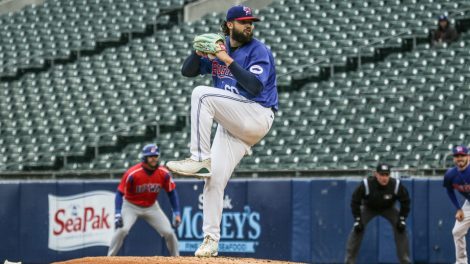In 2018, when he was taking regular turns in the Milwaukee Brewers rotation, Chase Anderson allowed a .758 OPS his first time through an order, a .639 OPS in his second, and an .894 OPS in his third. The season prior — easily Anderson’s best as a major-leaguer — the discrepancy wasn’t quite as pronounced, but the trend was the same. Hitters went from batting .216 his first trip through and .195 his second to .264 his third.
During the 2019 season, Milwaukee endeavoured to keep him from seeing a lineup a third time. In nearly half of his 32 starts, he exited after facing 18 batters or fewer. In 11 of his outings, he got to go between one and four batters into his third trip — in the final six, he got to go between five and seven. He completed six innings on only three occasions and surpassed 100 pitches just once.
So, it shouldn’t have been a surprise to see Anderson lifted Monday after five innings, having completed his second trip through the Baltimore Orioles order on 84 pitches. Never mind that Anderson was absolutely cruising, allowing only a run on three hits while striking out eight. Nor that he retired the final 12 batters he faced. Toronto Blue Jays manager Charlie Montoyo was just playing the percentages.
[snippet id=4931337]
That Monday’s result was unfavourable, as Wilmer Font entered for Anderson and quickly coughed up a game-tying run as the Blue Jays went on to lose 4-3, does not confirm that the process was faulty. You can certainly quibble with the usage of Font, who’s allowed a ton of hard contact this season, particularly with Thomas Hatch rested and available. It’s even fair to wonder if A.J. Cole would’ve made more sense, assuming Montoyo was saving Rafael Dolis for a leverage spot later in the game.
But Anderson was always going to be lifted. This is what analytically-minded organizations do. Like the Brewers, who have been to the post-season each of the last two years and set the standard for finding novel ways to maximize a pitching staff in October. And like the Blue Jays, who are currently cruising towards the playoffs and likely to try emulating that same creative pitching deployment once they get there.
Come October, it’s win-or-go-home baseball. You’re no longer thinking about individual workloads and letting pitchers build confidence from outing to outing. You’re thinking about getting 27 outs with whatever combination of pitchers makes the most tactical sense.
And this strange season, with its short schedule and expanded rosters, ought to present even more opportunity for novel approaches. We’ve already seen the Blue Jays doing it. The tendency is to bemoan the lack of length Toronto’s gotten from its starting pitching and suggest the club should to be getting pitchers deeper into games. But maybe that’s not a flaw. Maybe that’s a feature.
No one’s winning a SABR award by suggesting that starting pitchers tend to get hit harder their third time through the order. But that tendency has been even more pronounced this season. Entering Monday’s games, MLB starters had a collective 6.34 ERA on their third trip this year, up from last season’s 5.79 and 2018’s 5.50.
And Blue Jays starters have done their part to aid in that increase, pitching to a 9.19 ERA when facing an opposition lineup a third time. Sunday’s game was an excellent example, as Tanner Roark came back out for the sixth inning after rolling through five, and promptly allowed a double, a single and a homer during his third trip through Baltimore’s lineup, coughing up a lead in the process.
With 11 pitchers in Toronto’s bullpen — many of them converted starters — that doesn’t need to happen. It’s always a tough conversation for a manager when lifting a veteran workhorse like Roark who had thrown only 81 pitches through his five innings. But you don’t play to protect egos, you play to win games — this season more than ever.
“We want to give our team the best chance to win,” said Blue Jays pitching coach Pete Walker. “So, when you have arms that are ready and able in the bullpen, it’s tough not to go to those guys. Especially when you see the history of third time through the order for certain pitchers.”
Why, when you have 2019 starters such as Hatch, Anthony Kay, Ryan Borucki, Julian Merryweather, Shun Yamaguchi, Jacob Waguespack and Sean Reid-Foley all in your bullpen and capable of pitching multiple innings, would you ever push a starting pitcher any longer than necessary? It’s one thing with a Cy Young candidate like Hyun Jin Ryu, who’s earned his rope. It’s another with league-average innings-eaters like Roark and Anderson.
“It changes things. It changes how you look at a ballgame,” Walker said. “The hitters have a tough time with the different looks coming out of the bullpen. It makes it difficult for them making switches throughout the course of the game. They don’t know who’s going to be coming in, who they’re going to be facing late in the ballgame.”
The Blue Jays have to be careful, of course, not to stretch their bullpen too thin. But as they look at adding Nate Pearson and Matt Shoemaker to their mix of bulk pitchers in the coming weeks, and Ken Giles to the back end of the bullpen possibly as soon as this weekend, that concern alleviates.
Now you can add in Robbie Ray and Ross Stripling, each acquired ahead of Monday’s trade deadline. And Jordan Romano, who’s expected to return by the end of the season. Patrick Murphy’s standing by in Rochester if the club wants to add another hard-throwing arm into the mix. Sam Gaviglio and T.J. Zeuch are there as well, if low-leverage innings are in need of eating. There are plenty of options.
So, if anything, we’ll likely see the Blue Jays get more and more creative with their pitching deployment as the post-season nears. And they might just go full Brewers when we reach October. The club will surely do its best to line up Ryu and Taijuan Walker for its first two games of the playoffs. But beyond that pair, things could get interesting very quickly.
Think Ray for three innings, followed by Pearson for two and Stripling for two, with short stints the rest of the way based on matchups. Or say Anderson gives you four innings, then Merryweather and Kay combine for three, before the back-end of the bullpen closes things out. Or maybe Merryweather opens for an inning or two, giving way to a bulk outing from Shoemaker or Hatch, before Borucki comes on to chew up a couple mid-to-late innings and get you into the eighth.
It’s all on the table as the Blue Jays have built out a deep, versatile pitching staff that can be deployed in a variety of ways. Every team would love a five-man rotation of thoroughbreds capable of going seven every time out. But no team has that. In today’s MLB, creativity is key. And from the Blue Jays, we’re about to see even more of it.
“We don’t necessarily have to force the starter through the third time through the lineup,” Walker said. “We’re going to try our best not to force a starting pitcher into a situation that’s not ideal. I still love the history of baseball and starters going nine innings. But it’s just different nowadays.”
[relatedlinks]


